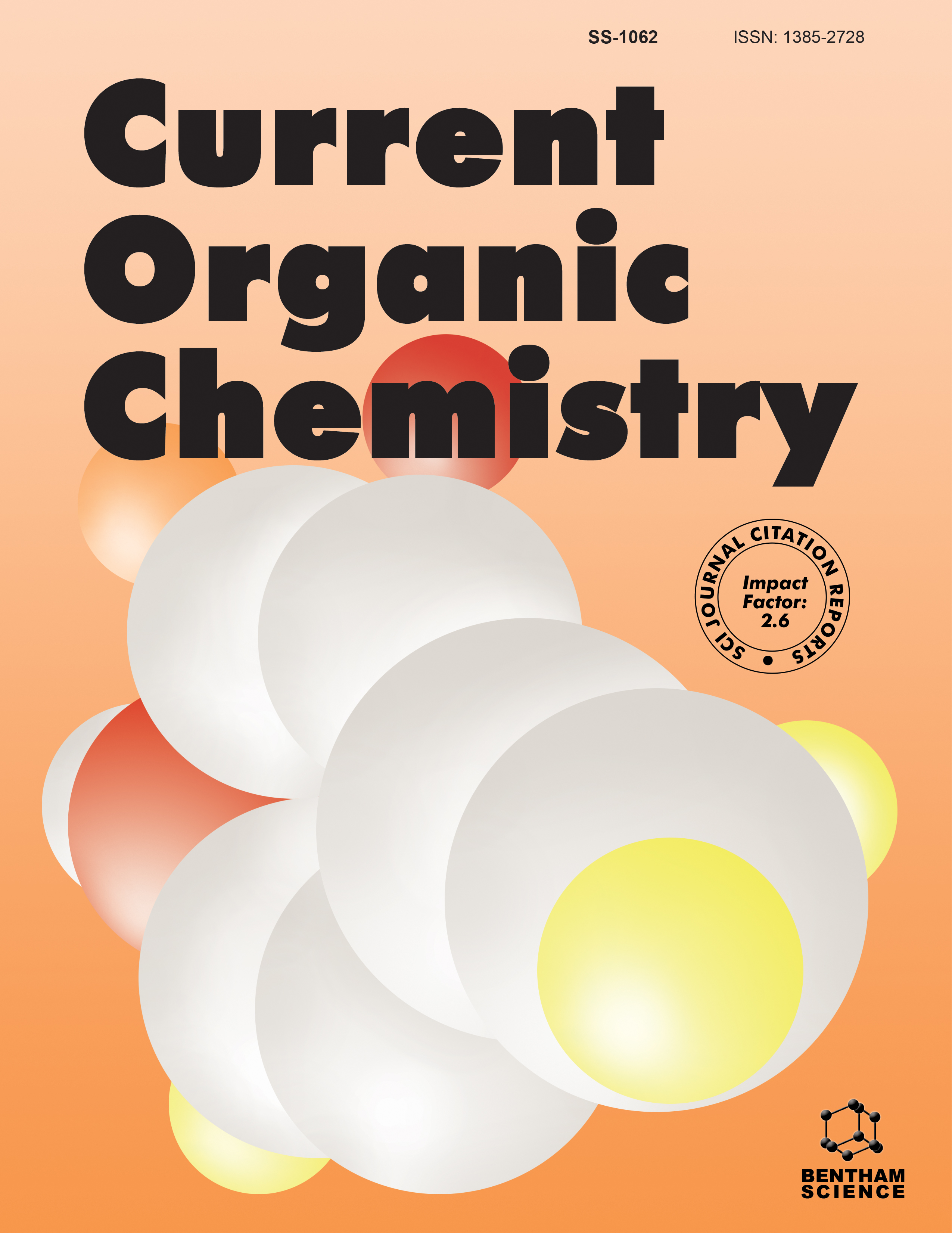- Home
- A-Z Publications
- Current Organic Chemistry
- Previous Issues
- Volume 19, Issue 10, 2015
Current Organic Chemistry - Volume 19, Issue 10, 2015
Volume 19, Issue 10, 2015
-
-
Strategies and Methods for the Synthesis of Anticancer Natural Product Neopeltolide and its Analogs
More LessAuthors: Yu Bai and Mingji DaiNeopeltolide, isolated in 2007, with its novel structural features and potent anti-cancer cell proliferation activity, has attracted a tremendous amount of synthetic efforts. This review briefly and chronologically summarizes each synthesis with the main focus on the strategies and methodologies for the construction of its cistetrahydropyran- containing macrolactone core.
-
-
-
Pixuvri® (Pixantrone Dimaleate, BBR 2778): From Lab to Market
More LessThis review will trace the steps in the development of pixantrone dimaleate (initial code BBR 2778, Pixruvi®), an anthracenedione chemotype, as a chemotherapeutic agent. This drug exhibits reduced cardiotoxicity in comparison to anthracyclines and mitoxantrone. Synthetic pathways, biological evaluations and mechanistic considerations will be discussed. On May 10, 2012, the European Medicines Agency granted a co Read More
-
-
-
Some Recent Synthetic Development on Compounds with Potent Activities on Hormone-sensitive Breast Cancers
More LessAuthors: Zheng Wang, Hui-Lei Gao and Xu-Dong ChenHormone-sensitive breast cancers correspond to breast tumors with the existence of estrogen and progesterone in the tumor issue. The hormones estrogen and progesterone may in some circumstance promote the growth of breast cancers. Therefore, compounds targeting hormone-sensitive breast cancers have attracted considerable interest from synthetic organic chemists. In the past two decades, numerous compounds ha Read More
-
-
-
Anti-cancer and Anti-angiogenic Properties of Various Natural Pentacyclic Tri-terpenoids and Some of their Chemical Derivatives
More LessPentacyclic triterpenes are natural substances, synthesized and present in variable amounts in a large number of terrestrial and aquatic plants, which act not only as antioxidants and antimicrobials but also as poisons, antibiotics, protease inhibitors, and so on. From the organic chemistry point of view, they are compounds derived from isoprene. These compounds consist of 30 carbons with different substituents, which faci Read More
-
-
-
Stable Synthetic Bacteriochlorins: Potent Light-Activated Anti-Cancer Drugs
More LessAuthors: Ying-Ying Huang, Dianzhong Luo and Michael R. HamblinPhotodynamic therapy (PDT) uses non-toxic dyes called photosensitizers (PS) to absorb light of visible or near-infrared wavelengths at non-thermal power densities that (in the presence of oxygen) combine together to produce reactive oxygen species (ROS). The main ROS formed are singlet oxygen and hydroxyl radicals that can both have cytotoxic effects. PDT has two separate mechanisms of specificity due to specific accu Read More
-
-
-
Recent Developments of Platinum-based Anticancer Drugs- Detection and Analysis in Biological Samples
More LessAuthors: Ping Lu, Yanjiao Li and Deyu HuPlatinum (Pt)-based pharmaceutical drugs are among the most active agents utilized for the therapy of cancer. Carboplatin, cisplatin and oxaliplatin are three members of the platinum anticancer drug family approved by Food and Drug Administration (FDA). Despite gaining enormous success, the extensive application and efficacy of these drugs are often impeded by toxic side effects, their susceptibility to acquired drug resista Read More
-
Volumes & issues
-
Volume 29 (2025)
-
Volume 28 (2024)
-
Volume 27 (2023)
-
Volume 26 (2022)
-
Volume 25 (2021)
-
Volume 24 (2020)
-
Volume 23 (2019)
-
Volume 22 (2018)
-
Volume 21 (2017)
-
Volume 20 (2016)
-
Volume 19 (2015)
-
Volume 18 (2014)
-
Volume 17 (2013)
-
Volume 16 (2012)
-
Volume 15 (2011)
-
Volume 14 (2010)
-
Volume 13 (2009)
-
Volume 12 (2008)
-
Volume 11 (2007)
-
Volume 10 (2006)
-
Volume 9 (2005)
-
Volume 8 (2004)
-
Volume 7 (2003)
-
Volume 6 (2002)
-
Volume 5 (2001)
-
Volume 4 (2000)
Most Read This Month
Article
content/journals/coc
Journal
10
5
false
en


